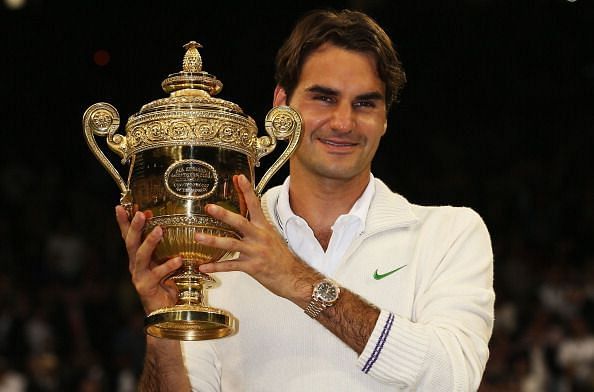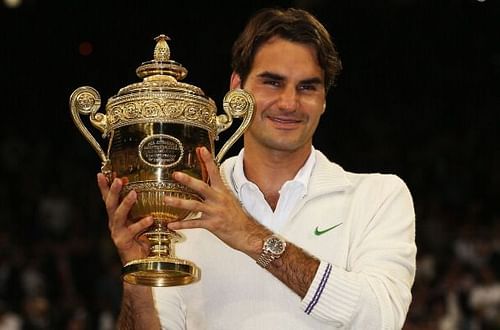
As Roger Federer closes in on a century of ATP titles, his finesse and class remain as awe-inspiring as ever

It has been over two decades since I have been watching men’s tennis from very close quarters. Like millions of tennis aficionados, I have been privileged to see some of the legends of the sports at the peak of their prowess, swatting away their opponents with ease, and also at their nadir, battling hard to remain relevant despite age catching up with them.
Growing up in the 90s, we had a galaxy of superstars who locked horns against each other to try and prevail as the number one player in the men’s game. And for millennials like me, it was Pete Sampras who was the best of the lot in terms of his all court skills and ability to win Grand Slams on a consistent basis.
Sampras excelled with his classical serve and volley game, which also had other great exponents in Boris Becker, Stefan Edberg, Tim Henman, Goran Ivanisevic and Patrick Rafter. Those booming serves and deft volleying skills at the net were tailor-made to the fast paced grass courts, and this group enjoyed stellar success at Wimbledon.
Then they were baseliners like Andre Agassi, Jim Courier, Yevgeny Kafelnikov, Thomas Muster, Carlos Moya, Sergi Bruguera and Petra Korda, who ground out opponents on the clay and hard courts with their clinical shot-making.
The Americans were a force to reckon with, possessing a galaxy of world-class players in Pete Sampras, Andre Agassi, Michael Chang, Jim Courier and Todd Martin. Meanwhile, traditional heavyweights like France, Australia, Germany, Sweden and Russia served as the biggest threats to the United States' dominance at the Davis Cup.
At the turn of the millennium, the class of the 90s was slowly but surely fading away. A new crop of players emerged on the tour and the most promising of the lot were Andy Roddick, Marat Safin, Lleyton Hewitt and Roger Federer. While Roddick and Safin were at their lethal best on the fast courts courtesy their booming serves and potent groundstrokes, Hewitt's solid baseline game seemed to be modeled on the lines of Agassi. The Australian had a big heart like Micheal Chang, and never failed to put up a fight.
Roddick and Hewitt quickly rose up the ranks and won Grand Slams to alternatively hold the World No. 1 ranking. Federer, on the other hand, struggled with his inconsistency and temper, and seemed destined to remain a talented underachiever.
But in 2001, Federer defeated Pete Sampras in the fourth round at Wimbledon and brought an end to the 'Sampras era' in men’s tennis. It took two more years of toil after that, but Federer’s maiden title at Wimbledon 2003 marked the rise of the tennis wizard who would go on to dominate the sport for the next decade.
The next five years saw Federer rapidly develop a stranglehold over the No. 1 ranking. The Swiss maestro was unstoppable as his racquet skills and lightning quick court movement seemed at a different level.
Federer possessed all the weapons in his armory to outgun his opponents from all corners of the court. His serve was as lethal as anyone's, and the consistency with which he hit aces was mesmerizing.
As far as his movement on the court was concerned, it seemed like he was gliding rather than running, with nimble footwork. While he could hold guard at the baseline, he was at his best while making those deadly forays to the net. His shot-making looked effortless and he his groundstrokes had the sting to unnerve any opponent.
Federer was racking up Grand Slams at lightning speed and seemed unchallenged until Rafael Nadal arrived on the scene. But it wasn’t the case that he didn't have tough competition before Nadal.
Andy Roddick, Leyton Hewitt, Marcelo Rios, Marat Safin, David Nalbandian, Juan Carlos Ferrero and Nikolay Davdenko were all world-class players, but the Swiss had the extra edge to beat them at major tournaments.
At the end of 2010, Federer was universally regarded as the dominant player of the decade, winning a staggering 16 Grand Slam titles. He had broken Pete Sampras’ record of 14 Grand Slam men’s singles titles, and looked destined to add a few more to his kitty. He had accomplished almost everything the sport had to offer and had most of the trophies in his cabinet.
But Federer’s juggernaut was stalled by Nadal, whose topspin-heavy baseline game seemed to be a perfect counter to Federer's all-court variety. The rivalry between the two drew comparisons with the famed Borg-Mcnroe, Edberg-Becker and Sampras-Agassi rivalries, and became one of the fiercest and most loved battles in the sport’s history.
The two giants produced some stunning tennis in Grand Slam finals to keep the audience at the edge of their seats.
Around 2008, new challengers like Novak Djokovic, Andy Murray, Jo-Wilfried Tsonga, Juan Martin Del Potro and Stan Wawrinka burst on to the scene, and it seemed like they possessed the skill and temperament to become champions in the future. Djokovic and Murray emerged as the strongest of the pack and rightfully earned their place in the ‘Big Four’ besides Federer and Nadal.
Djokovic in particular soon became a major competitor to Federer at the Slams, and the two had some epic battles in Major finals.
We also had Tomas Berdych, Richard Gasquet, David Ferrer, Marin Cilic, Robin Soderling, John Isner and Kei Nishikori who gave Federer tough fights in Masters Series and top tier tournaments.
Given the tectonic heights Federer had accomplished, merely making the quarters or semis of a Grand Slam was considered a mediocre performance by the critics. He put the doubts aside and reached the final at Wimbledon in both 2014 and 2015, only to be denied the title by Novak Djokovic.
With Nadal and Djokovic reigning supreme over him, many critics wrote Federer off and questioned his ability to win another Slam. Federer answered in emphatic fashion, winning the 2017 Australian Open and Wimbledon crowns, thus ending a five-year drought at the Slams. His never-ending zeal to compete even helped him defend the Australian Open in 2018.
With age catching up, injury woes mounting and a packed schedule to deal with, Federer has been wise to cut down his workload and compete in a select few top tier tournaments while remaining focused on the Grand Slams. His move to skip a major part of the clay season and the French Open has paid rich dividends as it helped him start afresh on his favored grass and hard courts.
At the ripe old age of 37, it is delightful to see Federer still compete with vigor and beat talented youngsters like Dominic Thiem and Alexander Zverev and win top-tier titles on the tour.
Since turning professional two decades ago, Federer has gone on to become the greatest player in the Open Era. There is no tennis record which doesn’t feature his name on the list. 20 Grand Slams titles, most weeks at No. 1, 8 Wimbledon titles, 6 Australian Open titles, 5 US Open titles, a Career Grand Slam and a Davis Cup trophy make Federer the most dominant male tennis player in the Open era.
Just last week, it was a sweet home-coming for Federer in Basel as he won his 99th tour title at the Swiss Indoors Open. With a staggering 99 ATP titles in his kitty, Federer is just one short of reaching a century of titles in his stupendous career. When he does get to the milestone, it will be universally lauded as a Herculean feat.
Federer has been a near-perfect role model for the Swiss people and has spearheaded a tennis revolution in the picturesque European nation. He along with Stan Wawrinka have been the flag bearers of men’s tennis in the country, achieving glittering success on the biggest of stages. The duo combined well to help Switzerland lift their maiden Davis Cup in 2014, and they also won the men’s doubles gold at the 2012 London Olympics.
However, it is not the mind-boggling statistics, but the sheer class and finesse with which Federer plays the game that endear him so strongly to the fans. Even today, he regularly conjures magical shots and incredible pick-ups that make spectators everywhere gasp in disbelief.
Federer is now within touching distance of equaling Jimmy Connors' all-time singles record of 109 tour titles. Judging by the way the Swiss ace is playing, he has two or three seasons of good tennis ahead of him, and could well surpass Connors as the most successful tennis player there has ever been on the professional circuit.